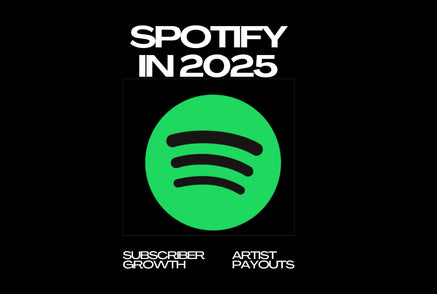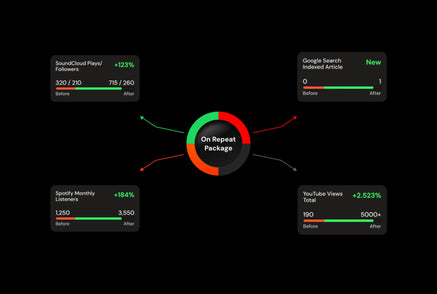Fair Question: Does Streaming Pay Enough?
Past lockdowns 2020-2021 have revealed plenty of issues that didn't have enough attention before and recent searches showed up that artists struggled most during the pandemic. With the canceling of concerts everywhere, British musician Nadine-Shah was stripped of her financial well-being. Her only earnings came from streaming services such as Spotify or Apple Music, she was forced to move back in with her parents. Shah realized that streaming services were not nearly enough to provide her livelihood, and she joined forces with other artists in a similar situation to voice their complaints. They even testified in front of the government, arguing for a change in the regulations in the streaming economy.
THE BIGGEST ROYALTY PAYMENTS HERE
Shah became a catalyst for other struggling artists in Britain. A group of over 150 artists, including Paul McCartney, Sting, and Kate Bush addressed a collective letter to Boris Johnson (UK Prime Minister ), asking for reforms. A similar campaign has been initiated in the United States by the Union of Musicians and Allied Workers, demanding higher payouts from Spotify. Further, artists have been scrutinizing the financial terms that record companies force on them.
However, artists' demand against undermining their artistic work is met with unfavorable odds. Even with the support of older independent artists, the largest forces of pop music remains silent on the topic. While many artists see Spotify as a threat, there has been a major shift towards streaming, which has caused the industry to grow quickly after a year of decline.
On social media, the movement has been dubbed with hashtag #BrokenRecord, which has given it virality. A member of the band Gomez called for people to turn their attention to this problem artists have had for years, and are continuing to struggle further.
True Spotify numbers and statistics
Indeed, this problem with streaming has grown along with the streaming industry itself. As soon as Spotify launched in the United States, musicians have been trying to voice the red flag of them earning fractions of a penny per click. Now, the problem is more prominent as streaming has become the dominant source of income for the music industry in the United States, making up 83 percent of revenue. Just in 2020, Spotify paid the owners of music rights over $5 billion.
Musicians are complaining about the distribution method of all this money. Not enough of this money reaches the artist, but rather stays in the hands of large record labels and major stars of the industry. Even though there is more music being made than ever, it has become nearly impossible for non-celebrity artists to earn their livelihood.
A large source of artists' complaints is over the basic economics of streaming platforms. Most use a pro-rata delivery system, according to which all revenue from subscribers and advertisements is gathered in one place each month, then distributed to artists based on their percentage of streams. This means that if, for example, Drake brought in 5% of all total streaming, he would get 5% of the money of each subscriber, whether they've listened to his music or not.
Union of Musicians called Spotify to revise payout policy
According to critics, this system, along with algorithmic and curated playlists that have major followings, gives the advantage to artists with mass appeal. Instead, artists with niche followings remain in the shadows.
Per one million streams, Spotify has an estimate of a 4,000 dollar payout, which makes less than half a cent per stream. And even then, the money must first go through the music labels, before the artists. So, artists need to acquire hundreds of millions of streams before earning anything worthwhile from Spotify.
This is why the Union of Musicians and Allied workers has called for Spotify to pay 1 cent per stream. This will be difficult for the company as it claims to pay two-thirds of its total income to rights holders, and not all of its users are paying, which increases the cost of each stream. Apple Music, which doesn't have a free plan option, seized this opportunity to claim it does indeed pay one cent per stream, both for recordings and songwriting.
As if to prove its role as a major payer in the industry, and to respond to demands for transparency, Spotify released an online report showing its payment funnels. With this, the company aimed to prove that a growing number of artists on the platform are earning a large amount each year. In 2020, 870 artists earned more than $1 million, while 7,800 earned more than $100,000. Charlie Hellman, vice president of Spotify claims that these stats show they care for artists with smaller, niche fan bases.
However, critics of Spotify saw their statistics in a different light. Out of the six million artists on the platform, only 184,500 earned over $1000. To this argues that professional activity is important, and only 472,000 artists met the standard of releasing at least 10 tracks in 2020. However, even in that small number of artists, only 39 percent made more than $1000 on Spotify.
Are Record Labels at Fault Too?
Last year the Digital, Culture, Media, and Sport Committee of the British Parliament began to investigate the streaming economy, with much pressure on the tech and record leads. While awaiting an official report, people have been eager to know what recommendations the committee will make.
Kevin Brennan, an activist on this issue, speculated that the committee may need to decide whether the streaming industry is one where an independent agent may investigate whether the industry is fair towards artists and consumers.
However, some of the most aggressive scrutinies have been towards the record companies themselves. Many speak up about how unfair the terms in artists' contracts are, as well as the unfairness of their royalty payments and even their copyrights to their music.
A telling example is brought up by the group Frenship, who released their hit song "Capsize" in 2016. They quickly were able to earn $150,000 from Spotify in 10 weeks. However, when they signed a deal with Columbia records, they realized that the income of their hit songs barely reached them. However, in their parting agreement with Columbia, there was a confidentiality expectation.
Nonetheless, record executives, lawyers, and artists' managers claim that the contracts and relationships between record companies and artists are changing towards the favor of artists, including a rise in royalty payments. A study done in 2002 showed that in their first contract with labels, artists were paid an average of 15-16% in royalties. Now, since 2015, royalty payments have increased from 27-32%.
The streaming industry reforms have to reflect current musicians' needs
Despite the odds, online campaigns have had more success than expected, gaining the attention of both the government and streaming companies. Spotify raised subscription prices, while SoundCloud adopted a more transparent payout system. According to this system, rather than collecting all the revenue in one place, users' money will go to the artists they listen to. Yet other proposals, such as paying some artists directly rather than through their record companies, have met challenges. In any reform, there would be people who profit and others who don't. Nonetheless, artists like Nadine Shah feel encouraged enough that their voices are finally being heard.






















Caleb_Cruz
I think Spotify definitely needs to revise its payout policy! I stand with those musicians! It’s so important to talk about things like that. Thank you guys, that you are the one who is not silent.
I think Spotify definitely needs to revise its payout policy! I stand with those musicians! It’s so important to talk about things like that. Thank you guys, that you are the one who is not silent.